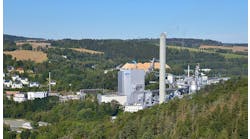This article was printed in CONTROL's April 2009 edition.
Wireless sensors are much more practical when energy harvesters are used to eliminate the need for power wiring. Energy harvesters convert vibration, heat or light into electrical energy, which is used to power a rechargeable battery or a capacitor. When designing a wireless sensing system with an energy harvester, multiple components must be optimized. The sensor and the radio must consume minimal amounts of power when active, and use little or no power when not actively sensing and exchanging data. The battery or capacitor must be able to supply the power needed by the sensor efficiently, and the energy harvester must convert available vibration, heat or light into maximum power output.
Let’s start with the sensor. Most wireless sensors measure pressure, vibration and/or temperature. Shell Oil is using a wireless sensing system made by GE Energy to monitor vibration and temperature sensors in rotating equipment at its Nyhamna gas plant in Norway (see Technology for details). The sensing system is powered by a vibration energy harvesting device manufactured by Perpetuum.
Minimizing the power needed by the sensor and the radio is critical. “We’re working with micro-module sensing systems that run on a minimal amount of energy, with a goal of 100µW,” says Rob Van Schaijk, principal researcher and activity leader of IMEC’s micropower program at the Holst Centre in Eindhoven, the Netherlands.
The next key component of the wireless sensing system is the energy storage device, either a battery or a capacitor. Batteries can store more energy for longer periods of time—but are heavier, more expensive and wear out quicker than capacitors.
The best wireless sensing systems minimize power needed by the sensor and the radio, so capacitors can be used instead of batteries. “Our energy harvesters normally charge a capacitor to power the wireless sensor,” notes Roy Freeland, chief executive of Perpetuum. “They can charge batteries, but there are issues with the number of recharge cycles that a battery will survive.”
Capacitors can’t hold a charge for as long as a battery, but in most wireless sensing applications this isn’t a problem. “Usually readings aren’t required when a machine isn’t running and generating power-producing vibration, but there are exceptions. The U.S. Navy needed temperature readings for three hours after machine shutdown, and this was easily accommodated by having a slightly larger capacitor,” explains Freeland.
A goal for wireless sensing systems is power consumption of 100 µW, but most systems need quite a bit more power for operation. Because most energy harvesters generate less power than required by the wireless sensing system, intermediate power storage devices are used, such as capacitors or rechargeable batteries. “Our new vibration piezoelectric energy harvester delivers an experimental output power of 60 µW, a new record for micro-machined energy harvesters,” claims Van Schaijk.
Larger vibration energy harvesters can generate much more power. “From about 25 mg of gravitational acceleration, our devices will generate at least 0.3 mW. This is about the minimum practical average continuous power level for high energy requirements such as condition monitoring, other applications require less power,” relates Freeland.
Vibration energy harvesters generate maximum power output at their resonant frequency, so harvesters must be selected based on available ambient vibration. Harvesters must also have sufficient bandwidth to accommodate variations in frequency as motors are loaded. “In the future, vibration harvesters will continuously tune their resonant frequency to provide maximum power. Broadband harvesters will also be developed to generate power efficiently across a broad spectrum of vibration,” observes Van Schaijk.




